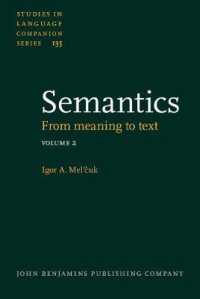- ホーム
- > 洋書
- > 英文書
- > Science / Mathematics
Full Description
General Editor: Peter Calow, Department of Zoology, University of Sheffield, England The main aim of this series will be to illustrate and to explain the way organisms 'make a living' in nature.








